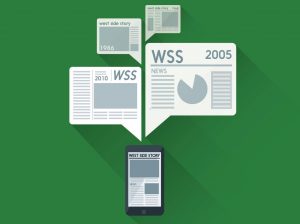What’s up with inflation?
The reason behind the nationwide increase in prices.
September 27, 2022
Eggs cost $1.40 per dozen in September of 2021, but $2.88 last week. While this change of $1.48 seems small, it is easy to overlook that the price has more than doubled. And increases like this have occurred over a wide range of goods and services. But why? The simple answer is inflation.
Inflation is an economic term that refers to the increase in prices over time. Small levels of inflation are common in a healthy economy. In the United States, the Federal Reserve (FED) tries to maintain the rate of inflation at a stable level of 2%. However, with a current inflation rate of 8.3%, the US has reached the highest recorded level in 40 years.
Pedro Silos, Associate Professor of Economics and Fuller Research Scholar at Temple University, said “Think, for example, of medical service. It’s very hard to measure its actual price increase; we know how much we get charged, but how much of that price increase is due to the procedure being better and how much is due to the general rise in prices?”
But sometimes, the same goods increase in price without any specific improvement. Examples include a gallon of gas or a 16-inch pizza. In total, such price increases are measured by the inflation rate.
Kartik Athreya, the Executive Vice President and Director of Research at the Federal Reserve Bank in Richmond, Virginia said “The way you measure inflation is fairly straightforward. You take a basket of stuff that you and I might buy, and then you ask how much does it cost to buy that basket today versus a week ago or a month ago or a year ago.”
But inflation affects different people differently.
“[inflation] redistributes wealth in a way in which you punish savers and benefit borrowers. And the same thing happens in labor markets. There are some workers who can renegotiate wages or they can transit from job to job very easily, and they will get a little bit of gain in terms of inflation or at least keep up with the prices, but then other workers, who are in long term contracts, they will get penalized,” said Silos.
Tyson Smith, who teaches AP Econ at West High, said “Of the big econ stats, inflation affects students probably more than the others because you buy stuff. And so, when you buy stuff, if stuff gets more expensive, then you feel that.”
As well as buying stuff now, high school students are future consumers who will be paying for housing, cars, and education.
“The power of inflation over the long term has several big implications for us, and that can affect whether it makes sense to borrow and buy something now or save up to buy it later,” said Smith. “I would hope that, when students leave high school, between econ and personal finance, those are concepts that they can feel like they understand and know because they do impact thighs pretty severely over the long term.”
Prices have been rising since the beginning of the pandemic. Most of these increases, however, have specific causes. Cars, for example, became much more expensive because it was harder to get computer chips that were needed for producing them.
However, when prices are rising in a wide range of goods, and there isn’t a clear real-world reason for why then there is usually a problem with the government’s policy.
During the pandemic, the US government gave out millions of dollars through stimulus checks and other methods. While this helped people in the short term, this increase of money in the economy made US dollars less scarce, and thus, each dollar is now worth less than it was before these checks were distributed.
Additionally, during the pandemic, fewer goods were being produced. Then, when people received stimulus checks, there were fewer things available for them to buy, which also led to higher prices.
“What we did is we just gave everybody a bunch of extra income, low and behold there was an increased demand for stuff,” said Smith. “Then, as COVID fears started to abate a little bit, we had what a lot of economists call pent-up demand. There was this buying power, and this eagerness to spend money that existed in a lot of households.”
One thing the government can do to combat inflation is by raising the national interest rates. This means when people take out loans, for houses, cars, college, or other things, they will have to pay back more. This decreases demand for these products, and prices start to fall.
“So now that the interest rate in the short run goes up, that’s going to lead you to not buy as many houses, to potentially save more and spend less today, and that’s going to take pressure off of the businesses to change their pieces… that workers face to demand higher wages from their employers, etc.,” said Athreya.
The FED is actively trying to combat inflation. Last week, they increased the interest rate by .75% and signaled that more rate increases will be coming. While this change may seem small, even insignificant, small changes over time will create a ‘soft landing.’ This will, hopefully, solve the inflation problem without causing other disruptions.








